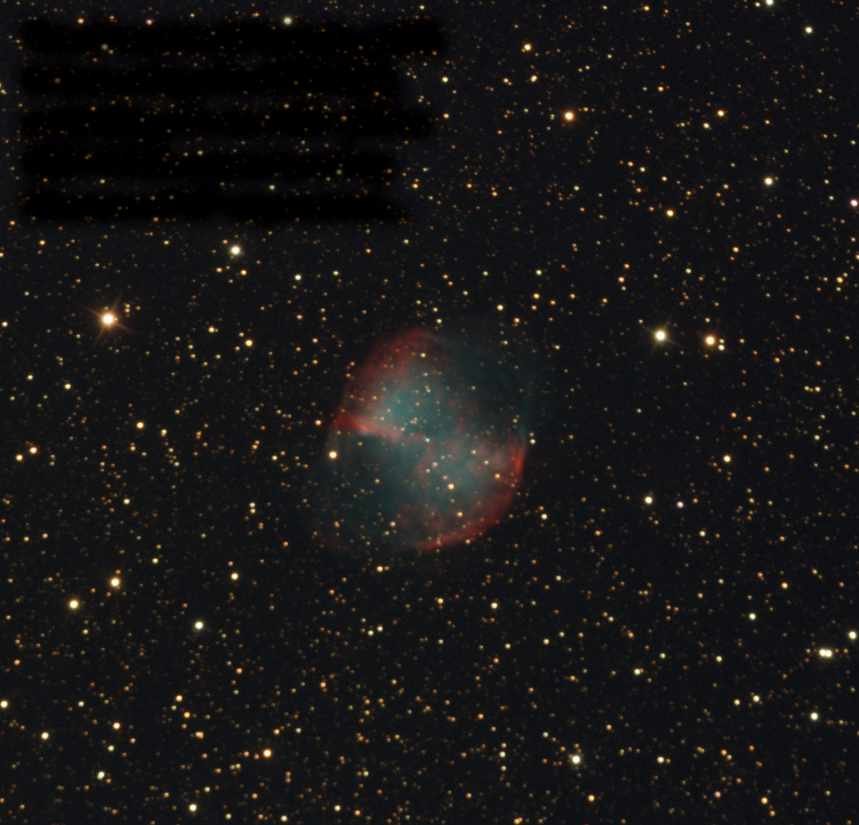A large aperture instrument, tailored for deep-sky astrophotography
WORDS: TIM JARDINE
VITAL STATS
• Price £3,590
• Optics Corrected Aspherical Cassegrain
• Aperture 260mm
• Focal length 1,300mm, f/5
• Focuser 3-inch rack and pinion
• Tube material Carbon fibre
• Weight 15kg
• Supplier First Light Optics
• Email questions@firstlightoptics.com
• www.firstlightoptics.com
We always welcome the chance to review something a bit different and the new SharpStar SCA260 piqued our interest, not only because of the unusual aspherical Cassegrain optical design, but also because of the attractive price tag for such a large telescope.
The SCA260 certainly is large – at over 700mm long and 280mm wide, the telescope is geared towards experienced astrophotographers – so we opted for a permanent pier-mounting option. Even with its lightweight and stylish carbon fibre housing it still tips the scales at around 15kg, and that is before we added our cameras and guiding equipment. Much of the weight comes from the large aspherical mirror and the secondary mirror and its housing, which is typical of Cassegrain designs where the focal point lies behind the primary mirror.

With the telescope safely mounted and balanced, we looked at the collimation of the secondary and primary mirrors, which both needed adjusting. At first, we attempted this with the tube in a convenient horizontal position at night, but found it was much easier to complete the alignment process in daylight. There is a basic, printed four-step guide provided, which mentions ‘Catseye collimation’ and we took this as a reference to a Catseye Cheshire Eyepiece (available separately), which we happened to have on hand.

Minor adjustments
The secondary mirror is the first to be adjusted, then the primary – in both cases using the provided Allen keys to centre the reflections in the eyepiece. The primary mirror is held steady by no less than nine supporting thumbscrews, which makes the anodised red rear section of the telescope look quite busy.
When we started using the SharpStar SCA260 we noticed that the considerable weight of the secondary mirror holder was causing a small amount of movement of the mirror on the spider vanes, which was throwing the collimation out when the telescope was slewing, but after a little experimentation we solved this issue by aligning the mirrors, pointing the SCA260 roughly at Polaris (Alpha (α) Ursae Minoris), the North Star, to do this.

The optical arrangement of the telescope makes it suitable for a wide range of astronomy cameras. We chose two for our review, a full-frame colour CMOS camera and a smaller sensor colour CCD camera. Between them these cameras enabled us to explore the limits of the wide image circle the SCA260 is capable of, and the sharpness and quality of the image when used on smaller targets, such as galaxies.
There are no requirements for the specific spacing of the camera – as long as the image is in focus the spacing is correct. With 75mm of back focus to play with there is plenty of room for filter wheels or off-axis guiders.
Tweaking the focuser
The focuser itself was smooth and easy to operate and it held well, even without being locked. However, we did find that there was some unwanted movement of the drawtube that got worse with more extension. We didn’t find any negative effects on the images we took, but it is worth being aware of this and maybe tweaking the focuser.
When we tested the SCA260 with the full-frame colour CMOS camera, it allowed us to capture large targets like the Pleiades, M45, in their entirety, with sharp refraction spikes on the brightest stars.
Towards the edges and corners of the image the star shapes became a little elongated as expected, and were consistent with the results of the spot diagrams available on the supplier’s website. With our smaller sensor camera the results were really pleasing too, especially on photogenic galaxies like NGC 891, and we were able to capture the kind of images that first got us interested in astrophotography. Meanwhile, smaller deep-sky objects – like the Cigar Galaxy (M82), the Dumbbell Nebula (M27), the reflection nebula M78, and the bright star cloud NGC 206 within the Andromeda Galaxy – presented a relatively close-up field of view and good detail.
Minor niggles aside, we were quite excited by the SCA260. With its large aperture, fast focal ratio, medium-long focal length, and affordable price tag, SharpStar has produced an innovative design. This is a telescope for the dedicated enthusiast.
Corrected aspherical optical system

Although it looks similar to a Schmidt-Cassegrain Telescope, the SCA260 Aspherical Cassegrain Astrograph (ACA) uses a different optical arrangement to produce an image. When light enters the open-ended tube it encounters the 260mm aspherical primary mirror with its central hole. This light is then reflected back up towards the large 120mm spherical secondary mirror which, in turn, directs the light path through the central hole in the primary mirror. At this point the light travels through a threelayered image correcting lens, which helps to flatten the image.
This three-tiered approach allows the SCA260 ACA to operate a large aperture at a 1,300mm focal length, with a useful f/5 focal ratio, putting this type of scope in a class of its own. The unobstructed image circle through the 3-inch focuser is 80mm, which more than covers a full-frame camera without vignetting issues. The primary mirror is made from low expansion PZ33 glass for thermal stability, and both mirrors are coated with aluminium. A reflectivity greater than 95 per cent is quoted.
KIT TO ADD
1. ZWO EAF (Electronic Auto Focuser)
2. OCAL electronic collimator
3. 12V power supply for the integrated cooling fans
VERDICT



